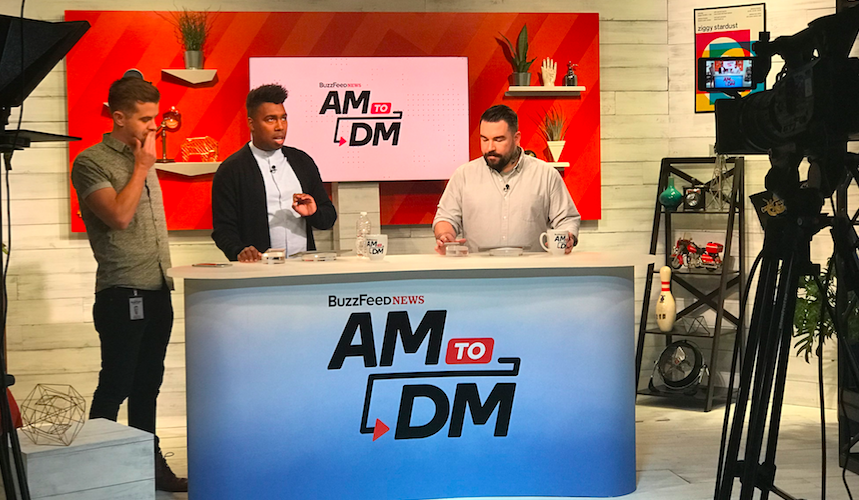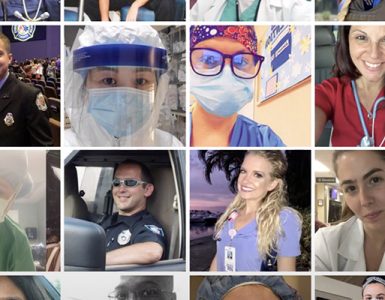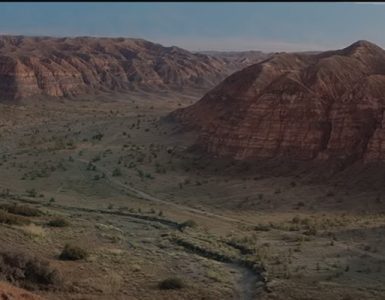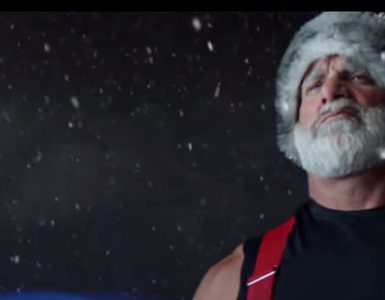BuzzFeed News’ investment in video is starting to pay off. Their live morning showing that airs on Twitter is continuing to grow. When Twitter first announced its investment in live video last year, it was unclear if any of the shows would actually make it. In an era where traditional morning shows seem to only be speaking to the pre-YouTube generations AM to DM has found its niche.
Found Remote interviewed Cindy Vanegas-Gesuale the executive producer of the show about its beginning and recent growth. The show which is hosted by Saeed Jones and Isaac Fitzgerald airs on weekdays on Twitter at 10am ET.
Found Remote: Why was the show launched?
Cindy Vanegas-Gesuale: After taking a look at the morning show landscape, we noticed there wasn’t a show for the way people consume news today, which is on social media. We identified this an opportunity to broaden BuzzFeed News’ reach through premium programming that would appeal to a young and informed audience eager to participate in conversations about what’s happening in the world. It seemed like a great opportunity to bring our original reporting and social influence to new audiences and challenge ourselves creatively.
FR: How has it been doing so far?
CVG: It’s been going really well. Since the show launched in September 2017, AM to DM has produced more than 60 live shows and more than 70 hours of programming with 200+ guests including Dolly Parton, Lee Daniels, Elizabeth Banks and Senator Kamala Harris. The show averages over 1 million views per day – today, for example, we had over 1.4M viewers (600K+ were live viewers, 800K+ were replay viewers) – and the #AM2DM hashtag has repeatedly been a top trending topic on Twitter in the U.S and worldwide.
In November 2017, for example, the show garnered more than 14 million impressions on Twitter and reached users all across the globe; almost a third of the show’s total audience is international with viewers joining from the U.K., Canada, India, Australia, South Africa and Mexico. AM to DM has generated significant social buzz and has embodied today’s use of social media to make its live social TV programming work for audiences on Twitter.
FR: How is it different than a TV morning show?
CVG: Our show differs from morning shows in that editorial decisions are driven by social conversations on Twitter and our original reporting. We’re interested in breaking news on Twitter, whether it’s a conversation about police brutality on reservations or Steve Bannon’s war with Twitter. If it’s important to power users, we are talking about it on AM to DM. We interact directly in-real time with our audience and we are able to react to their comments and questions. We are not constrained by commercial hit times and therefore we can dedicate more or less time to content as we see fit.
FR: What are the challenges?
CVG: Like with any new show, our biggest challenge is awareness and driving new audiences to our content. Luckily we have the power of BuzzFeed News’ social accounts to help drive awareness and as consumption habits move toward social TV we have the advantage of being first to market.
FR: What have been the best episodes? Worst? Biggest successes?
CVG: One of our best episodes was our coverage of the mass shooting in Las Vegas. That Monday we were one week old. Instead of covering the shooting by showing the same videos that looped for hours on cable news shows and speculating about the shooter and victims, we decided to approach the coverage from the perspective of:
1) what do we know
2) what don’t we know
3) how are we feeling
It made for more humane coverage and hit on the topics that were relevant and/or front-of-mind for an audience gathering information on the internet or via social media. For example we interviewed one of our reporters about hoaxes that were already creeping onto the internet and fake victim profiles, and booked Senator Chris Murphy, one of the most outspoken advocates of gun control legislation, on the show.
FR: What are plans for the show for future?
CVG: We hope to produce the show for years to come and have it become a staple of social television. We want to continue to break big stories, talk to the biggest names in entertainment, politics, media, and tech and also to those who are driving conversations on Twitter in real time.





















